Strawberry season is a favourite for Angela Clifford and her family
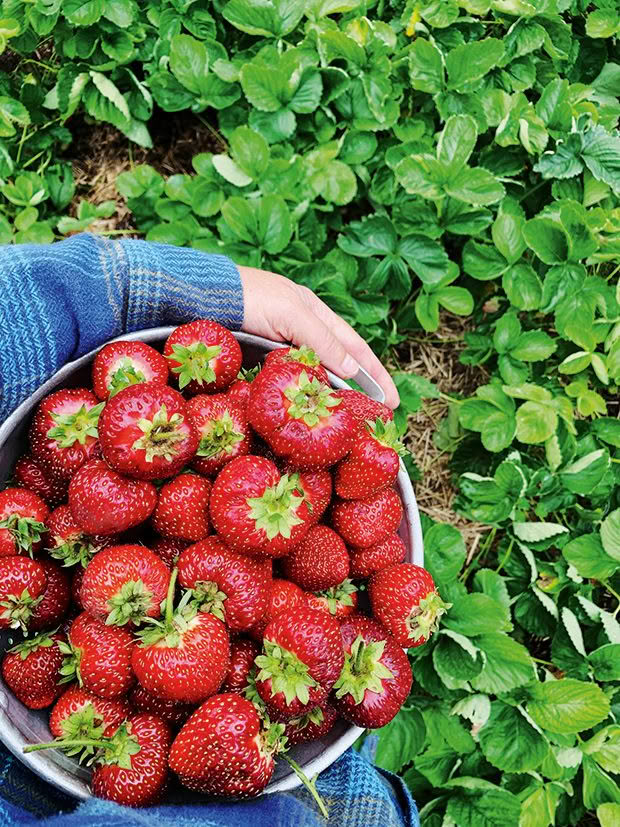
For Angela Clifford and her family, living on The Food Farm has been about appreciating the wonders of food and nature. Strawberries have been a key part of the journey.
Words and images: Angela Clifford
When people tell me they don’t have time to grow their own food I reframe it as “It’s not a priority for you right now”.
I totally get it. There are many legitimate reasons why that might be the case. But it’s a good exercise to sit with that sentence for a moment.
I wanted to share why growing food is a priority for us. It began when our eldest child, Ruby, started eating solids (about 18 years ago). Although we didn’t have much money, we were, like many parents, considering buying convenient pre-made baby food. Seeing the questionable ingredients in these foods prompted us to explore making it ourselves. By doing this we could use organic ingredients we grew ourselves while stretching our budget.
I recognise now that our food-growing experiments were enabled by family support. Both Nick and I had parents and grandparents who grew food. We’d also had a large vegetable garden in the first house we’d flatted in together while living in Australia. But growing food for Ruby was something different.

Angela’s children – Matilda, Flynn and Ruby – grew up learning how to appreciate food, and in particular, strawberries.
It changed everything. It gave us some serious purpose and was remarkably achievable. This tiny little human didn’t need much of anything to nourish her small body and we were able to grow far more than she needed. Our rental property was in Tuahiwi, North Canterbury. It was an area that had a long history of vegetable growing for mana whenua and it was easy to see why – rich loamy soils. Her first foods – potatoes and pumpkins, greens and tomatoes – grew abundantly. When Ruby graduated to meat, that became another challenge, and lead to our first experiment raising chickens for eating. Anyone who’s watched our Country Calendar episode showing now six-foot Ruby processing her own chickens will know how successful that experiment turned out.
When Ruby was two, we moved to The Food Farm and Matilda and Flynn followed in quick succession. Just like that we had three children under five.
I remember those days with both sharp focus and sleep-deprived haziness. Days were broken into very small blocks of time that were spent feeding them mostly. I loved being outside with my children, and they all had an inquisitiveness about the natural world. This curiosity extended to pulling out the seedlings I’d just sown, and tasting the mud at the bottom of the apple tree planting hole. Now, I’m not sure I’d have the patience, but back then I was just grateful for the freedom of the fresh air and sunshine.
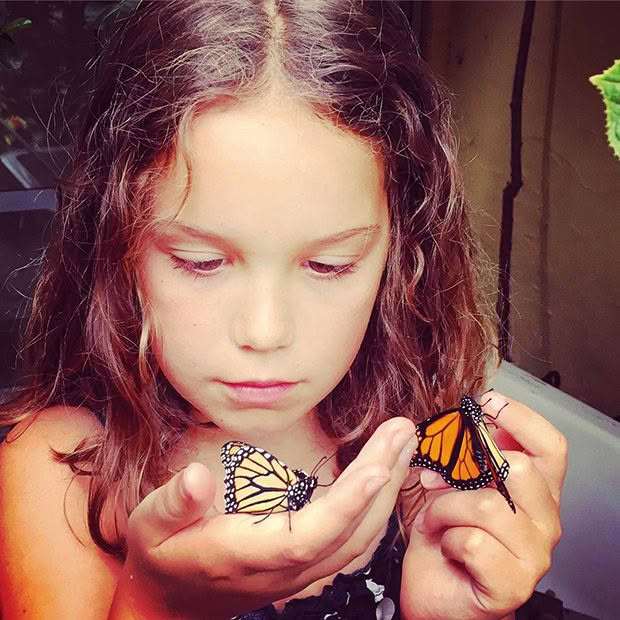
Matilda – the queen of small things.
Matilda, in particular, was the queen of the small things (her nickname is still QotST for those who know us well). It was magic seeing the world through her eyes, from her perspective. I’d have to get down on my hands and knees or even my stomach to examine her version of the world – its abundance and diversity was awe-inspiring. To this day I think she’s played a really important role in the design of The Food Farm; we have many ecosystems that support a wide range of small insects, skinks and other creatures. And I still get down on my hands and knees beside now sixteen-year-old Matilda to examine the extraordinary world of praying mantis’ and native bees.
As the children grew older different proteins, fruit and vegetables became part of their diets, however there’s been one consistent that we’ve grown every single year from the very beginning; strawberries.
We grow a huge amount of fruit here, a quick count would suggest over thirty varieties including apples, medlar, mulberries, melons, apricots, guava, fig, pomegranate, mandarins and kiwifruit. But there’s something about the egalitarianism of strawberries that makes them special. When I recently asked my Instagram followers what prevented them from growing more food they gave me these hurdles in the following order: time, knowledge, space and then money.
I’m going to plead the case for the strawberries in every situation. Strawberries take very little time. They’re not annuals, and planted in the right spot can thrive with little maintenance. It’s true that netting them from the birds will result in a more successful harvest but it doesn’t take a lifetime of growing knowledge to work out when you need to pick them.
I’ve seen strawberries thrive in the smallest of nook and crannies. They love pots, provided you water them well. It’s true they cost some money in the outlay stage but once you get started you can expand your patch by propagating via runners.
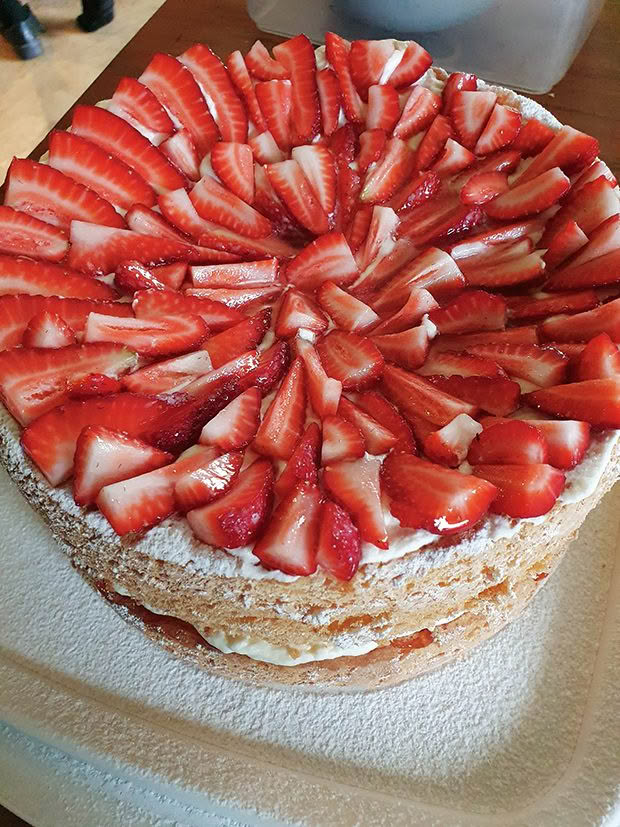
A strawberry birthday cake.
For my children, they’ve been a perennial favourite. I discovered the hard way there is no “off button” for children and strawberries. Ruby’s birthday falls in early summer, prime strawberry season. For most of her life, her birthday cakes have been strawberry-themed. Early birthday parties involved letting preschoolers into the strawberry patch. Some children mowed their way through rows shovelling as many berries as possible into their mouths, including fruit of dubious ripeness. Other children would carefully select the brightest ones and place them gently into up-turned t-shirts, hoarding for later feasts.
I know many of these children as young adults now and I’ve always wished I’d kept a record of which child reacted in which way. Sometimes I think I can guess!
Ruby has now taken some plants grown from runners to her university flat, where, despite a lack of time, space, and money, she grows them. The knowledge of how to do this is our gift to her, and growing food is undoubtedly a priority she’ll hold in some form for the rest of her life.
STRAWBERRY GROWING TIPS
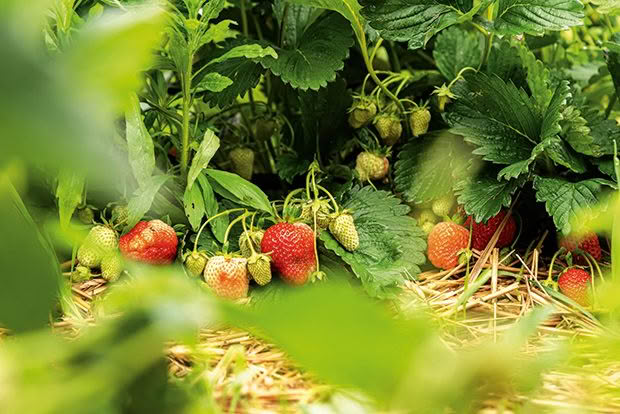
• You’ll never plant enough. Bank on 25 plants per child. It will be woefully inadequate but it’s a reasonable starting point and at the end of the season there may be enough left over for a small pot of
jam. Maybe.
• Collect the runners each autumn and plant them out in a new row or space each winter or early spring. Make sure you keep them on the move, they can be susceptible to Phytophthora which lives in the soil and causes root rot.
• A weed mat can be useful to protect the plant from weeds but also to keep the ripening fruit off the dirt.
• To water, we run drip irrigation under the matting, which discourages fungal diseases.
• In Te Wai Pounamu South Island, choose day-neutral varieties. This will ensure you have the longest season possible. Our current variety is ‘Albion’.
• Harvest them daily in season, or every second day at the very least – you’ll be able to keep an eye on potential competition for the fruit from birds and other beings (the list is long – everything eats strawberries).
• Feed the plants well. We sow them into good compost and then spray with a seaweed tea once a week during the growing season (after harvesting).
• When you harvest your strawberries, snap the stem with your thumbnail, don’t pull them from the calyx (green part at the top of the strawberry). If the calyx does come away the fruit won’t store. These are the ones to eat while harvesting.
• Yield will diminish significantly after three years, so we tend to stop harvesting then and pull up the matting and irrigation, moving it to fresh spaces and new runners.
Head to @TheFoodFarmNZ on Instagram to see us planting runners.
Strawberry Cordial
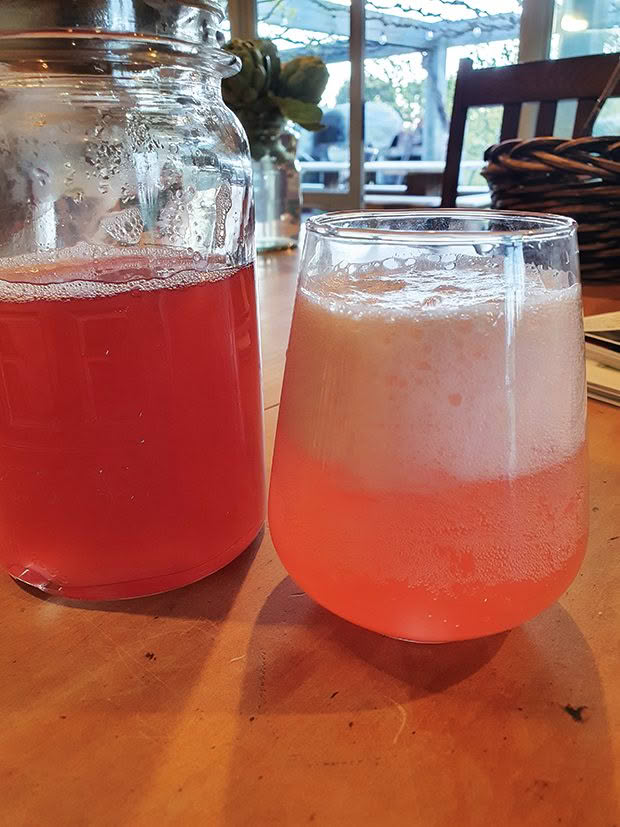
This recipe is very dear to us here on The Food Farm. It comes from a close friend who passed away a few years ago, Ali Cribb. One of my children’s favourite memories is of drinking strawberry cordial with Ali and partner Michael on their farm in North Canterbury. The best thing about the recipe is that the strawberries can be swapped out for just about any soft fruit so you can have a whole season of different flavoured cordials.
INGREDIENTS
550ml water
750g sugar
650g whole strawberries
2.5 teaspoons citric acid
METHOD
Combine sugar and water, bring to a simmer and then turn off. Cool for an hour, then add fruit and let sit for up to 12 hours (any longer it may start to ferment). Strain syrup through muslin or equivalent. Any leftover pulp can be used on pancakes or cereals etc.
Bring the syrup to a boil and add the citric acid. After a few minutes, turn off and allow to cool slightly before putting cordial in the sterilised bottles while it’s still hot. Put lids on and then invert the bottles and allow them to cool; this creates a vacuum and seals the bottles. They should then be safe to store in a cool place rather than in the fridge.
Love this story? Subscribe now!
 This article first appeared in NZ Lifestyle Block Magazine.
This article first appeared in NZ Lifestyle Block Magazine.
